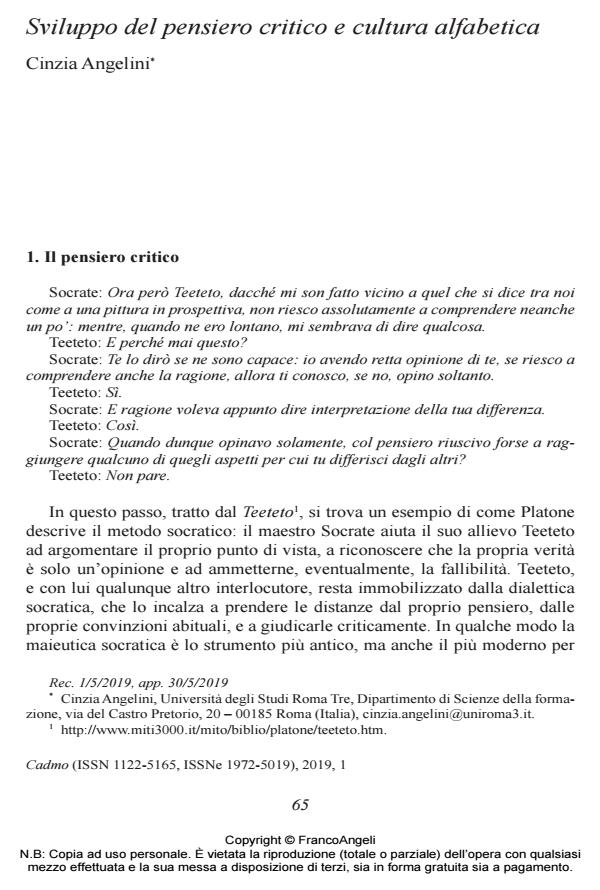Critical thinking and literacy
Journal title CADMO
Author/s Cinzia Angelini
Publishing Year 2019 Issue 2019/1
Language Italian Pages 17 P. 65-81 File size 428 KB
DOI 10.3280/CAD2019-001006
DOI is like a bar code for intellectual property: to have more infomation
click here
Below, you can see the article first page
If you want to buy this article in PDF format, you can do it, following the instructions to buy download credits

FrancoAngeli is member of Publishers International Linking Association, Inc (PILA), a not-for-profit association which run the CrossRef service enabling links to and from online scholarly content.
This article shows a model for the development of critical thinking through the practice of handwriting. The model is inspired by the digital chain that Maryanne Wolf (2018) uses to demonstrate how reading skills are becoming weaker and weaker due to the use of technological devices. The hypothesis is that if a mental habit (Dewey, 1933) incline to thinking critically is structured while reading and writing skills are still under development, it is possible to limit the damages caused by digital reading. The model has been first applied to the works of one of the pupils participating in In interiori puero, a research activity conducted with the fifth-grade students of a primary school in Rome. The activity was directed by Emma Nardi within the experimental programme In intellectu et in sensu promoted by Benedetto Vertecchi. The model is currently being applied to the works of all the participating students.
Keywords: Critical thinking, handwriting, reading and writing skills, writing process, reading comprehension process.
- Ricerche in corso A cura della Redazione, in CADMO 2/2022 pp.97
DOI: 10.3280/CAD2021-002008
Cinzia Angelini, Sviluppo del pensiero critico e cultura alfabetica in "CADMO" 1/2019, pp 65-81, DOI: 10.3280/CAD2019-001006